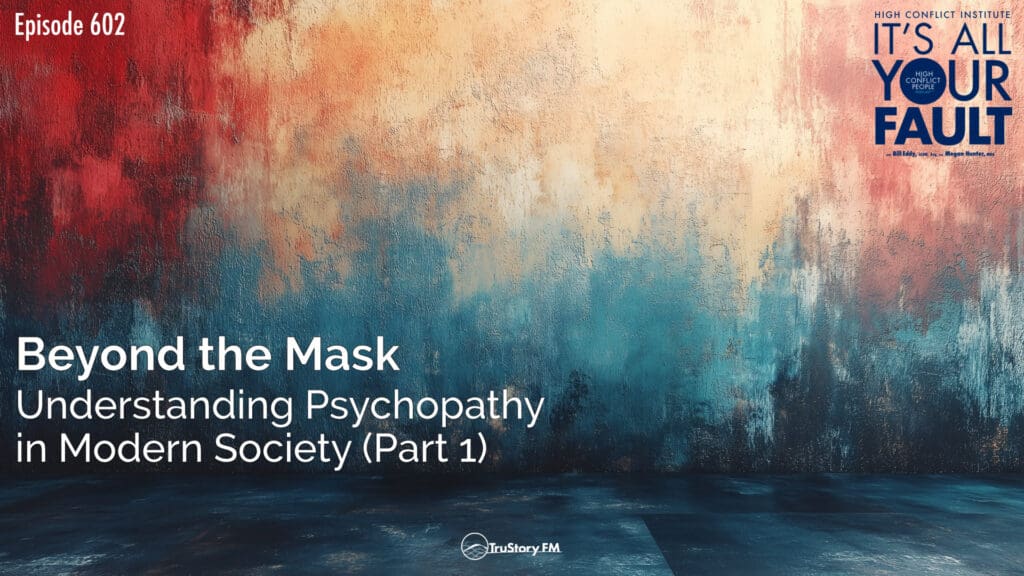Understanding Psychopathy: Costs, Characteristics, and Social Impact (Part 1)
In this first episode of a two-part series, Bill Eddy and Megan Hunter explore psychopathy, its relationship to antisocial personality disorder, and its staggering $460 billion annual cost to the US criminal justice system. Drawing from recent research and their extensive experience at the High Conflict Institute, Bill and Megan break down complex psychological concepts into practical, understandable terms.
The Spectrum of Antisocial Behavior
Bill and Megan discuss how antisocial personality disorder manifests, its early warning signs, and its relationship to psychopathy. They explore how these traits appear in various settings — from business environments to personal relationships — and why early intervention is crucial, particularly before age 15.
Understanding Psychopathy’s Three Key Features
The episode delves into the three main characteristics of psychopathy: disinhibition (extreme risk-taking), callousness (lack of empathy), and boldness (absence of fear). Bill and Megan examine how these traits manifest in real-world situations and their implications for relationships and society.
Modern Diagnosis and Assessment
The hosts explore the shift from viewing personality traits as fixed characteristics to understanding them as dimensions on a spectrum. This modern approach allows for more nuanced understanding and assessment of psychopathic traits.
Questions we answer in this episode:
- What is the difference between antisocial personality disorder, sociopathy, and psychopathy?
- How early can antisocial behaviors be identified?
- Can someone with these traits change with treatment?
- What role does empathy play in psychopathy?
- How do these personalities impact everyday relationships?
Key Takeaways:
- Psychopathy costs the US criminal justice system approximately $460 billion annually
- Early intervention (before age 15) is crucial for changing antisocial behaviors
- Antisocial personality disorder affects about 4% of adults, while psychopathy affects about 1%
- People with these traits often display instrumental empathy rather than genuine empathy
- Understanding these traits can help with protection and boundary-setting
This first episode in the two-part series provides invaluable insights for anyone seeking to understand psychopathy and its impact on society. Whether you’re a professional working with high conflict personalities or simply interested in understanding complex human behavior, Bill and Megan’s expert analysis offers practical knowledge and protective strategies. Tune in next week for Part 2, which will explore genetics, causation, and additional dimensions of psychopathy.
Links & Other Notes
PSYCHOPATHY ARTICLE:
THE MOVIE BILL BROUGHT UP AS A GOOD EXAMPLE OF THIS:
BOOKS
ARTICLES
- Living with High-Conflict People: Do’s and Don’ts for Living with an Antisocial High Conflict People
- The Sociopath: Antisocial High Conflict People
- Sociopaths and Their Deceptions
- Manipulators in Plain Sight: Spotting Antisocial Personality Disorder
OUR WEBSITE: https://www.highconflictinstitute.com/
- Submit a Question for Bill and Megan
- All of our books can be found in our online store or anywhere books are sold, including as e-books.
- You can also find these show notes at our site as well.
Note: We are not diagnosing anyone in our discussions, merely discussing general patterns of behavior. Nor are we providing legal of therapeutic advice. Please seek the assistance of your local professionals to seek help.











